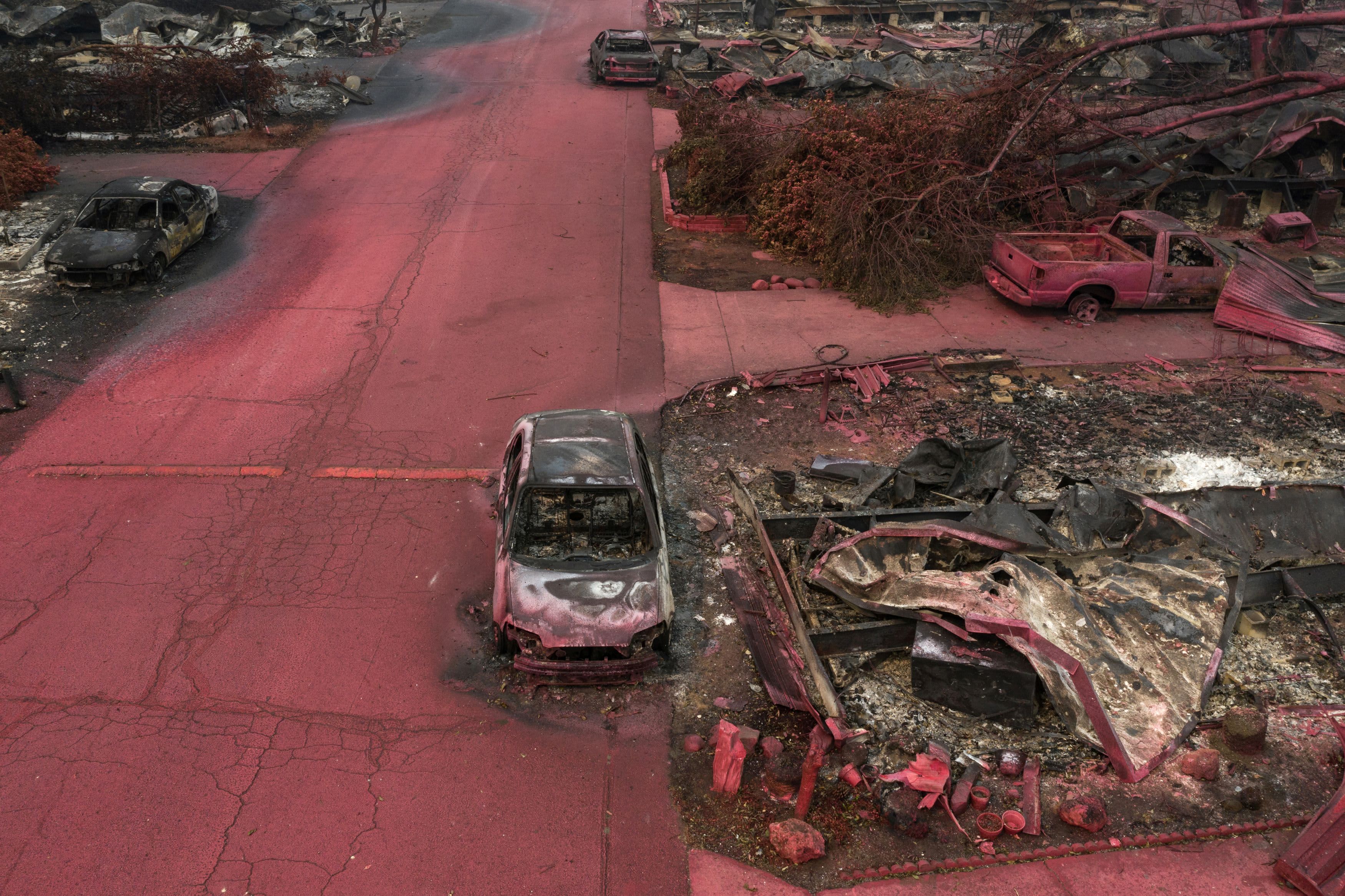
Red fire retardant blankets burned residences and vehicles in the aftermath of the Almeda fire in Talent, Oregon, U.S., September 14, 2020.
Adrees Latif | Reuters
The U.S. is about halfway through the 2020 wildfire season, but historic blazes in California, Oregon and Washington have already decimated millions of acres, destroyed entire communities and caused what could be hundreds of billions of dollars in damage.
While fire season has always been present in the West, human-caused climate change has made fires more frequent and destructive and fueled extreme and drought conditions that allow for quicker spread. This season, record-setting blazes have inundated states in smoke and some of the worst air quality in the world as resource-strapped emergency responders struggle to contain the outbreaks.
For many Americans, especially people living in western states like California, fires in recent years have felt worse than they can remember. The size and effects of fires have intensified, according to a CNBC analysis of data from the National Interagency Fire Center.
Take a look at these charts analyzing how the scale and destruction of fires has changed in the U.S.:
The number of wildfires across the U.S. has decreased in recent years. However, climate change has triggered larger and more intense blazes that destroy more acreage, especially in dry conditions.
There are a few major fire anomalies throughout history, like the Great Fire in 1910, which burned 3.1 million acres over Idaho, Montana, and Washington. However, recent data shows that wildfire season is becoming more destructive nationwide, with an increasing number of acres per fire and total acres burned each season.
Another factor that exacerbates fire spread is the growing number of people who move to fire-prone wildland areas. Population growth in such areas create more flammable timber and makes it harder for responders to prioritize saving lives and land to contain spreading blazes. California in recent years has seen unprecedented property loss, often focused in the rural areas.
“Humans play a big role,” NIFC spokeswoman Carrie Bilbao said. “Not [by] just causing fires, but where they live and moving into areas where fires are.”
Entire towns in California, Oregon and Washington have been completely destroyed by this year’s historic wildfires, many of which are not contained. At least 36 people have died in connection to the fires and nearly two dozen are missing.
More than 17,000 firefighters are battling 25 major wildfires across California, according to Cal Fire, the state’s fire agency, and more than 3.3 million acres have burned this year, an all-time record in the state’s history.
Blazes have burned more than 586,000 acres in Oregon and at least 764,000 acres in Washington as of Thursday, according to the NIFC.
As fires remain ongoing, CNBC’s analysis of the NIFC data shows that California’s 2020 season has already set a record for most acres burned in the past nearly two decades. Washington could also hit a record high since 2002 depending on how the current fires are contained.
In fire-prone California, five of the 20 biggest wildfires in state history have happened this year, according to Cal Fire, the state’s fire agency. All five fires are still burning.
This season, the August Complex that ignited from a series of lightning strikes last month has become the biggest fire ever in the state. The third and fourth largest fires also burned last month. Seven of the 10 most destructive fires in state history have ignited in the last five years.
The state’s fires this year have been astonishing, not only in their destructiveness but in how closely concentrated they’ve been. Cal Fire reports 66 total fires starting in August this year, six of which have burned 100,000 acres or more to date.
“California, folks, is America fast forward,” Gov. Gavin Newsom of California said earlier this month. “What we’re experiencing right here is coming to communities all across the United States of America unless we get our act together on climate change.”




